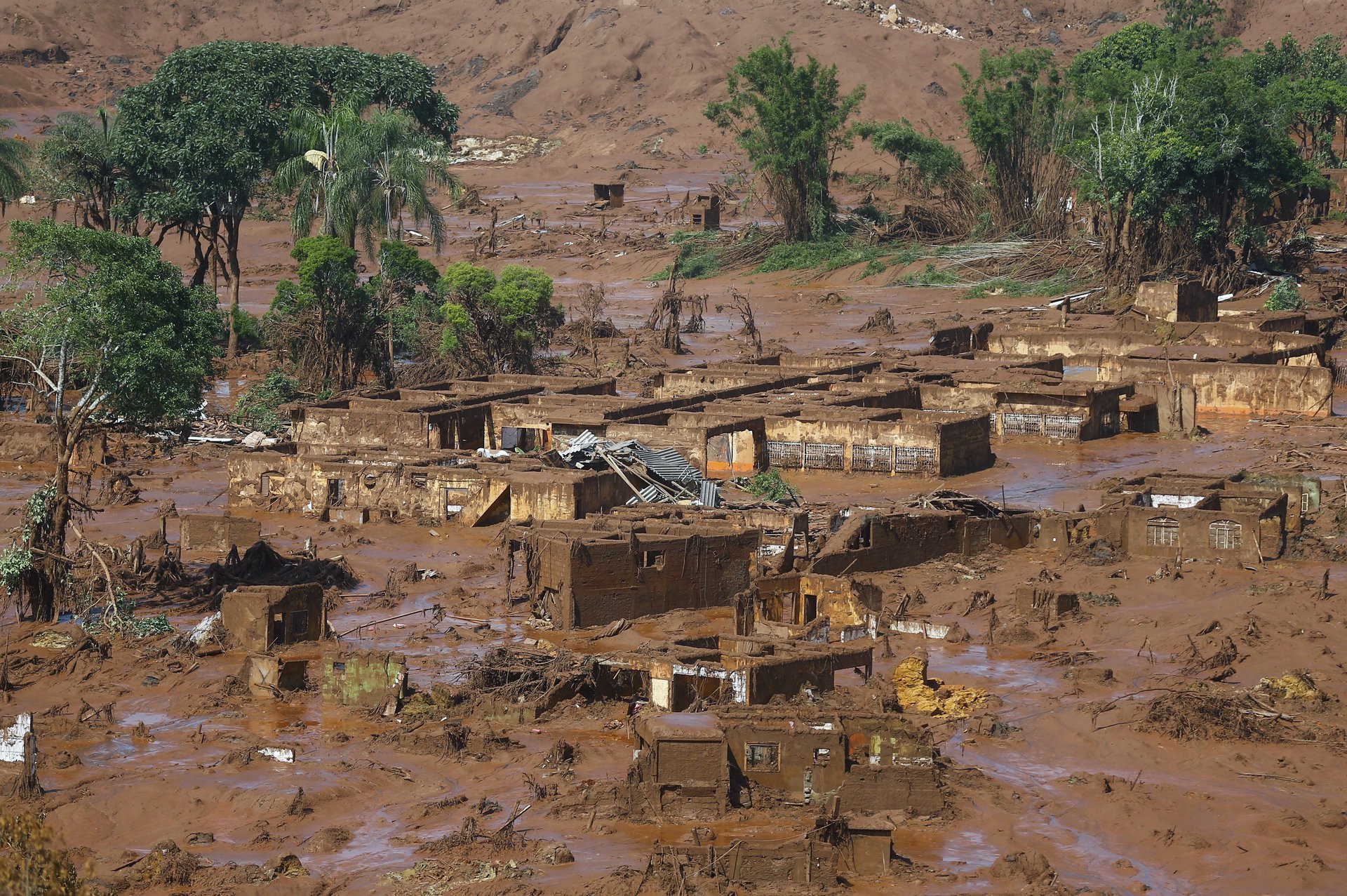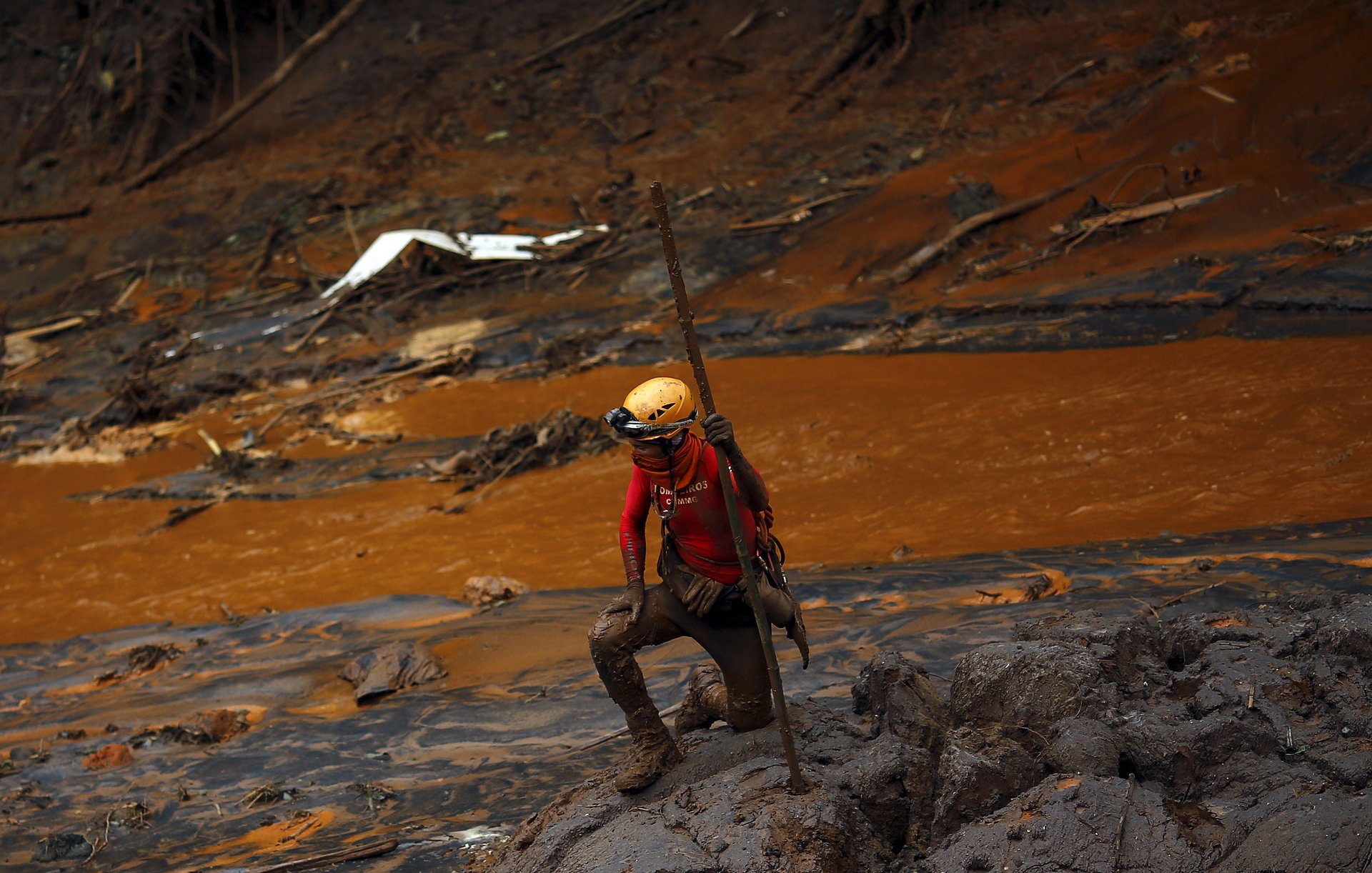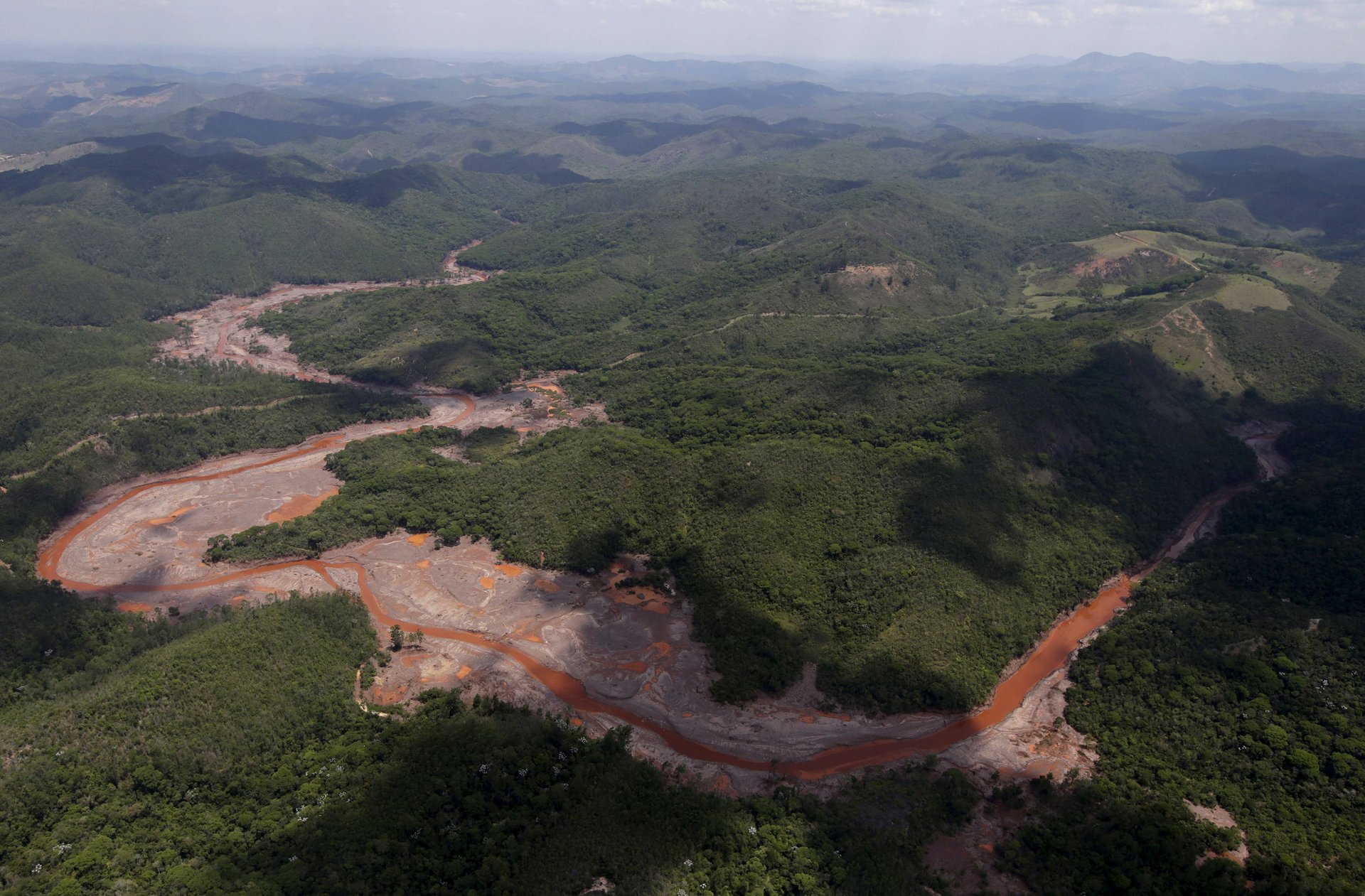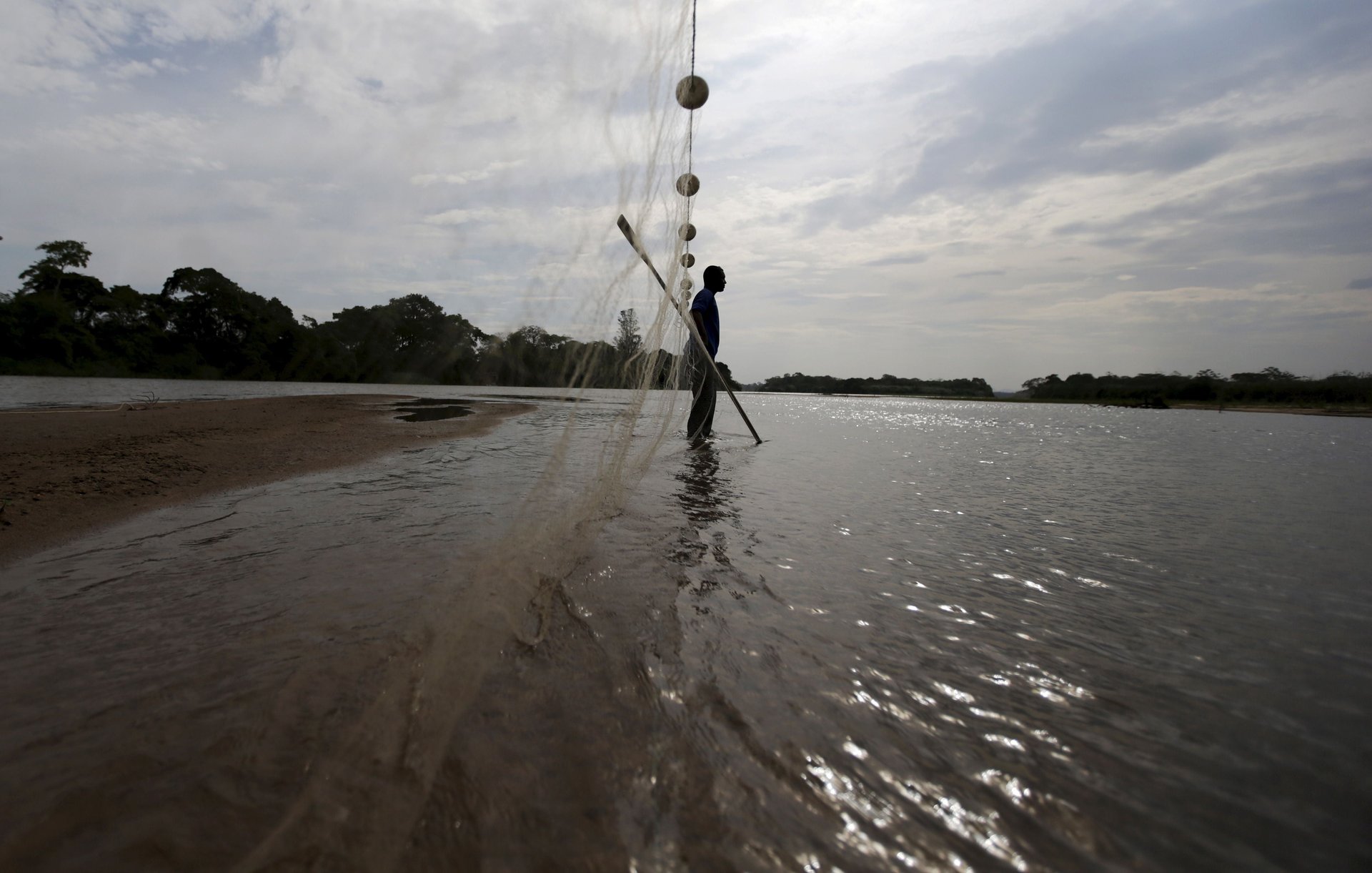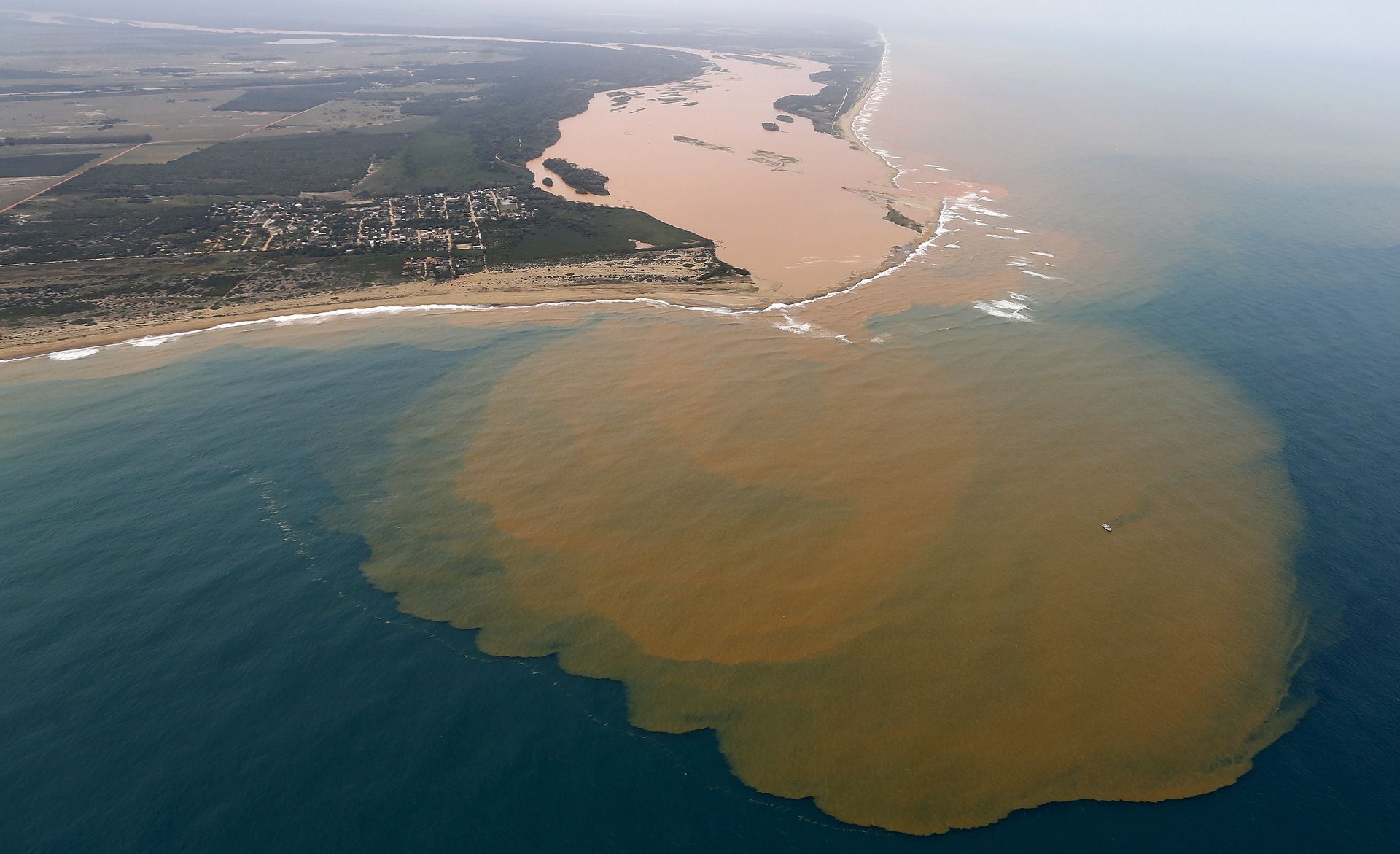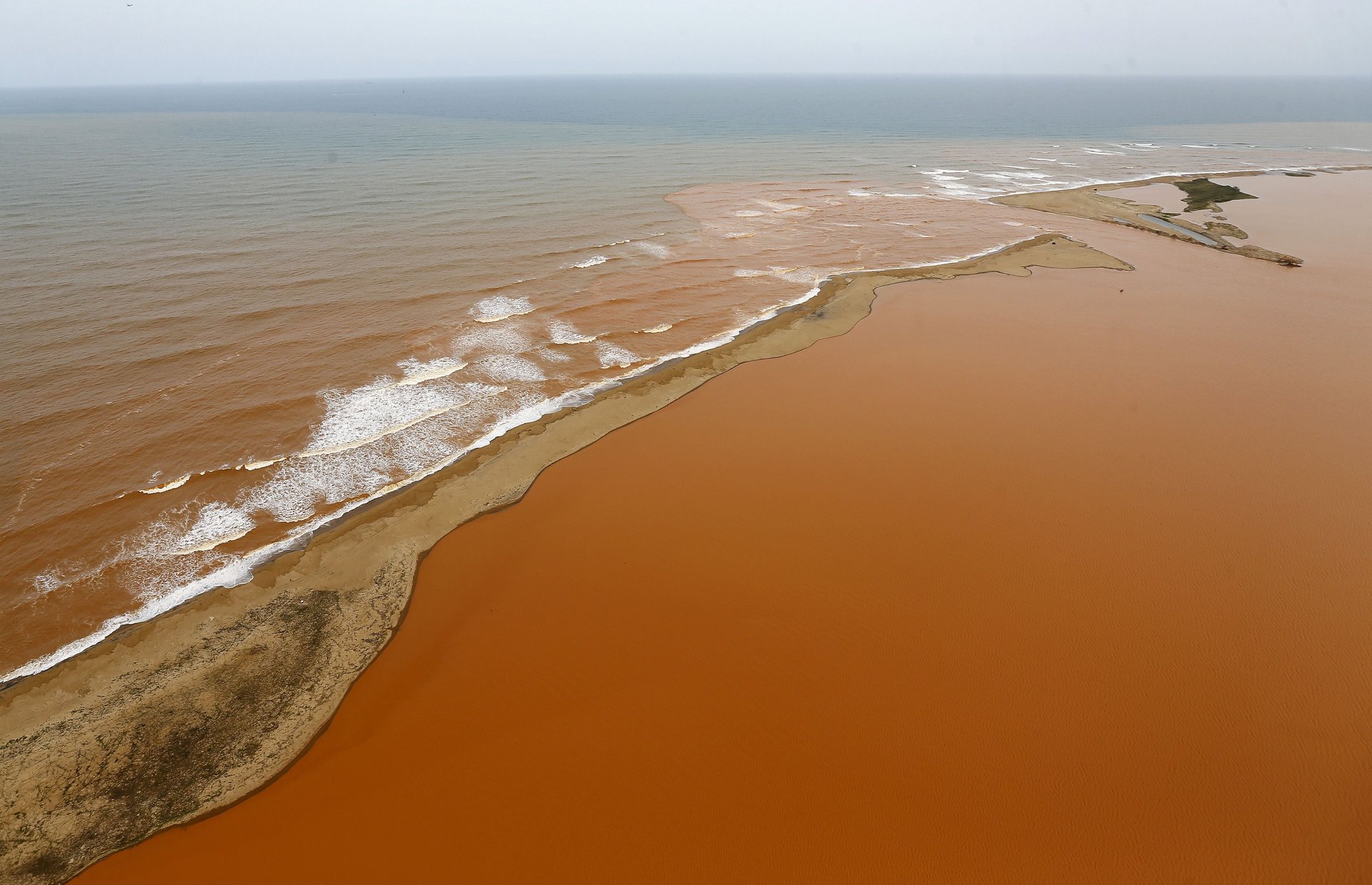Photos: Haunting images show the devastating effects of a toxic mud slide in Brazil
On Nov. 5, a dam at an iron ore mine in southeastern Brazil collapsed, unleashing 50 million cubic meters of waste water that flooded nearby communities and killed more than 10 people.
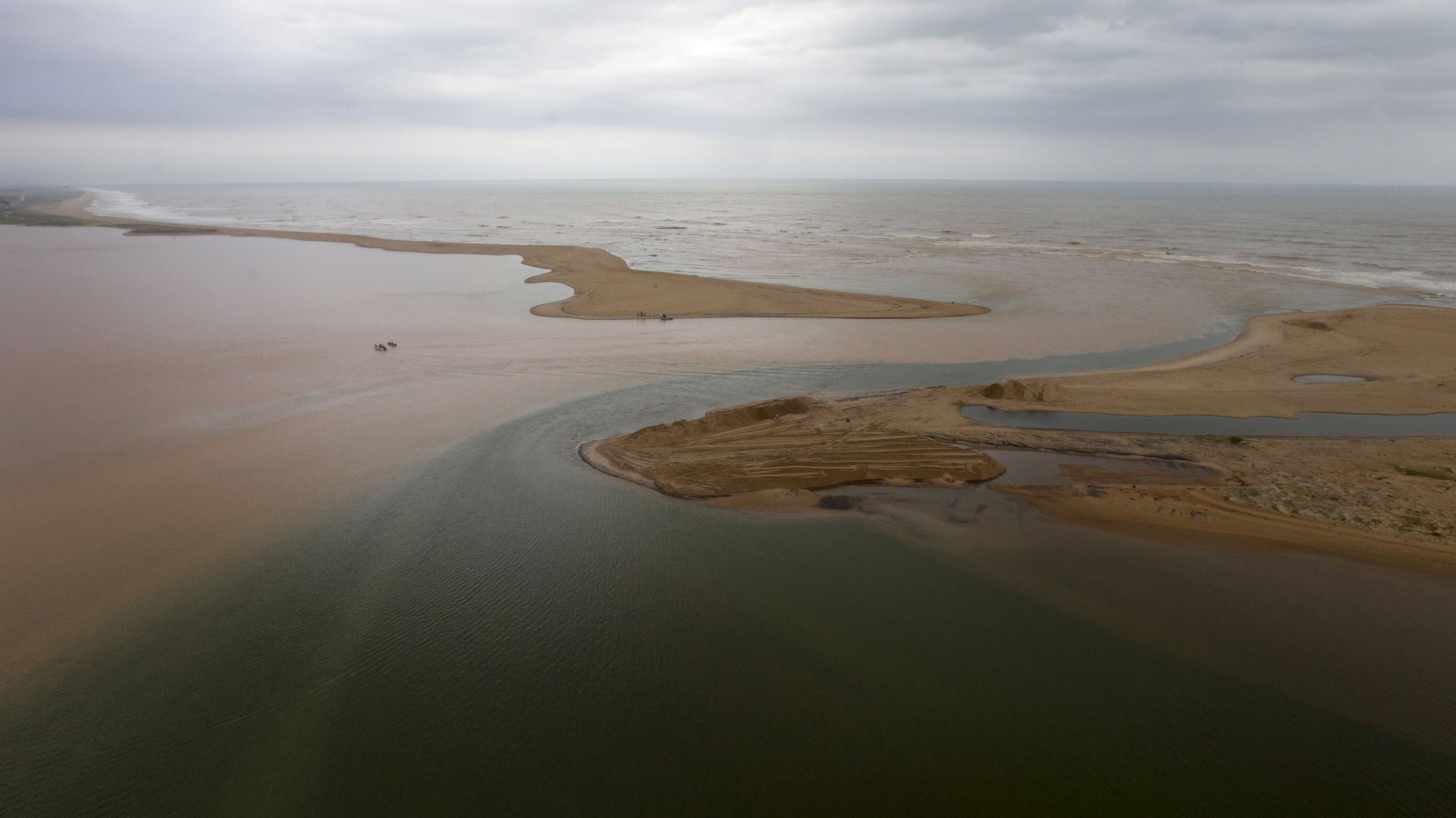

On Nov. 5, a dam at an iron ore mine in southeastern Brazil collapsed, unleashing 50 million cubic meters of waste water that flooded nearby communities and killed more than 10 people.
But the disaster didn’t end there. In the following weeks, the gunky waters funneled into the Doce River, a major waterway whose name means “sweet” in Portuguese. The sludge flowed downstream for more than 400 miles tinting the river a chocolate hue before reaching the Atlantic. Along the way, it contaminated water used by thousands of people to drink, farm, and fish.
Economic and environmental losses remain unquantified. The mud has already killed thousands of fish, likely by choking them to death with its fine sediment.
Mine owner Samarco, a joint venture between Vale and BHP Billiton, set aside one billion reais ($260 million) in an emergency fund. Green Peace says that’s nowhere near the amount needed to repair the damage.
The companies have said the waste is mainly composed of sand and does not pose any health risks.
The UN, however, said on Nov. 25 that evidence shows the sludge released by the failed dam contained “high levels of toxic heavy metals and other toxic chemicals.”
“The scale of the environmental damage is the equivalent of 20,000 Olympic swimming pools of toxic mud waste contaminating the soil, rivers and water system of an area covering over 850 kilometers,” John Knox, UN Special Rapporteur on human rights and the environment, said in a statement.
The Doce River, he added, is now considered dead by scientists.
Here is a timeline of the mud’s devastating course over the past 20 days:
